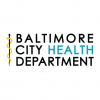Investigative Hearing – Lead Paint Poisoning and Baltimore’s Children
Wednesday Feb 4th, 2015
The Baltimore City Health Department (BCHD) is pleased to have the opportunity to review Council Bill 16-0280R – Investigative Hearing – Lead Paint Poisoning and Baltimore’s Children. The purpose of this bill is to assess the status and accelerate the pace of eradicating lead paint poisoning in Baltimore City and Maryland as a whole and working to achieve consensus on the coordinated roles and investments required to spare Baltimore’s families and children from another generation of this devastating and preventable disease.
Overview:
The Baltimore City Health Department combats childhood lead poisoning through medical case management of lead poisoned children, environmental inspections of homes with lead hazards and enforcement of applicable laws, prosecution of noncompliant property owners, intensive primary prevention home-visiting, health education, and outreach, and referrals of families to lead abatement programs. Despite the success of the lead poisoning prevention program, much more needs to be done to reach the goal of eliminating childhood lead poisoning.
There are 56,701 children under age six at risk of lead poisoning in Baltimore City. The Maryland Department of the Environment (MDE) reports that in 2012 33% of all eligible Baltimore City children ages 0-72 months were tested for lead, the second highest testing rate in the state. Testing rates for Baltimore City children at age 1 and 2 years have remained relatively steady over the past five years at 63.4% and 57.7% respectively and are also one of the highest in the state. Of those tested, 1.2% had elevated blood lead levels of at least 10 micrograms per deciliter (ug/dL). This constitutes the highest percent out of all of Maryland’s jurisdictions, and four times the state rate of 0.3%.
Additionally, 1,224 Baltimore City children under age six (6.5% of the those tested) had blood lead levels between 5ug/dL and 9ug/dL, the current reference level recommended by the US Centers for Disease Control and Prevention (CDC). Based on CDC’s recommendations, BCHD began targeting this population for intervention in 2012 as detailed below. Thanks to increased testing and intervention, Baltimore City saw a 15% decrease in the number of children with elevated blood levels between 2011 and 2012. The number of children in the City with blood lead levels higher than 10ug/dL decreased 86% over the last decade.
Baltimore City Interventions for Blood Lead Levels between 5 and 9ug/dL:
Based on the CDCs guidelines, BHCD began outreach to families of children with blood lead levels between 5 and 9ug/dL in 2012. Services for these families are anchored in preventing further exposure to lead. Contact is initiated based on lab results from MDE, and families are offered telephonic or in-person education and case management services. In both approaches families receive extensive education about lead, potential lead hazards, cleaning, nutrition, referrals to social and environmental programs, and case management. Cases remain active for at least six months and families are provided re-testing reminders.
BCHD also continues Primary Prevention Services in which a community health worker conducts preventive home visits to low-income pregnant women to assess potential lead hazards in the home. Participating families receive referrals to legal and financial resources to address lead hazards as well as education and supplies for other home environmental health issues (pests, asthma, indoor smoking, injury hazards, fire safety, CO). Primary Prevention visits also offer the opportunity to educate parents about blood lead testing requirements for children.
Improving Rates of Testing:
BCHD actively promotes blood lead testing for all children ages one and two, as mandated for City residents. BCHD targets the most burdened communities to conduct “healthy homes parties” — an interactive intervention for small groups. “Healthy homes parties” bring community health workers directly into the community through existing social networks such as churches, school parent associations, and in the homes of friends and family. The “parties” include lead poisoning prevention education and teach community residents how to advocate for quality rental units by filing Notices of Defect – the mechanism for triggering MDE enforcement of the lead law for rental housing. BCHD staff also participate in community health fairs to further educate the community on the dangers of lead and the importance of lead testing.
BCHD Partners in Fighting Lead Poisoning:
BCHD works very closely with MDE. The lab tests come from MDE prompting follow up with the family. We have daily discussions about protocols, case management of specific cases and property information. The database that we utilize is an MDE database and each quarter we meet to discus quality improvement. We just conducted a successful CDC site visit with MDE around our 5-9 case management protocols.
BCHD also actively partners with the Baltimore City Department of Housing and Community Development, and the Green and Health Homes initiative. We have a data sharing agreement that allows housing to better serve Residents who are homeowners. We also make referrals to Green and Healthy Homes. We recently partnered with Housing to successfully attain a new grant from HUD grant.
Thank you for the opportunity to comment on this bill. The Health Department will be present at a hearing to offer additional testimony and answer any questions.
